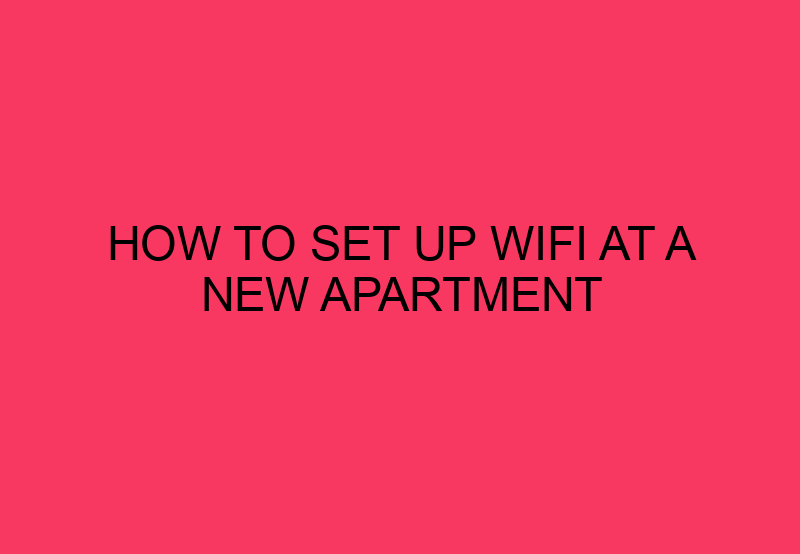1. Determine Your Internet Service Provider (ISP)
To set up WiFi at your new apartment, the first step is to determine which ISP serves your area. You can call or search online to find available ISPs in your location. Some common providers include Comcast, AT&T, Verizon, and Spectrum.
2. Choose a Router
Once you have determined your ISP, it’s time to choose a router. There are many options for routers, and you can buy one from your ISP or purchase one on your own. If you plan on using a lot of data or have a large household, it may be best to opt for a robust router with multiple antennas.
3. Connect and Configure Your Router
When you have your router, you need to connect it to your ISP’s modem. You can do this by plugging an ethernet cable from the modem into the router and another one from the router to your computer. After this, you can log in to your router and set up the network name and password.
4. Optimize Your WiFi Network
Now that your router is connected and configured, you can optimize your WiFi network to get the best performance. Here are some tips:
- Place the router in a central location in your apartment to maximize coverage
- Set up a guest network to keep your personal data secure
- Change the default admin credentials to keep your network secure
- Regularly update your router’s firmware to keep it running efficiently
5. Troubleshoot WiFi Connectivity Issues
Even when you have optimized your network, you may still run into connectivity issues. Here are some common issues and how to solve them:
- Slow connection speeds – restart your router or move your device closer to the router
- No connection – check the cables, restart the modem and router, and contact your ISP if needed
- Weak signal – move the router to a higher location or use a wireless extender
- Interference – eliminate potential sources of interference, such as microwaves or other electronics
Conclusion
Setting up WiFi at a new apartment may seem overwhelming, but it’s a relatively straightforward process. By choosing the right router, optimizing your network, and troubleshooting any issues that arise, you can enjoy faster internet speeds and more reliable connectivity in your new home.
